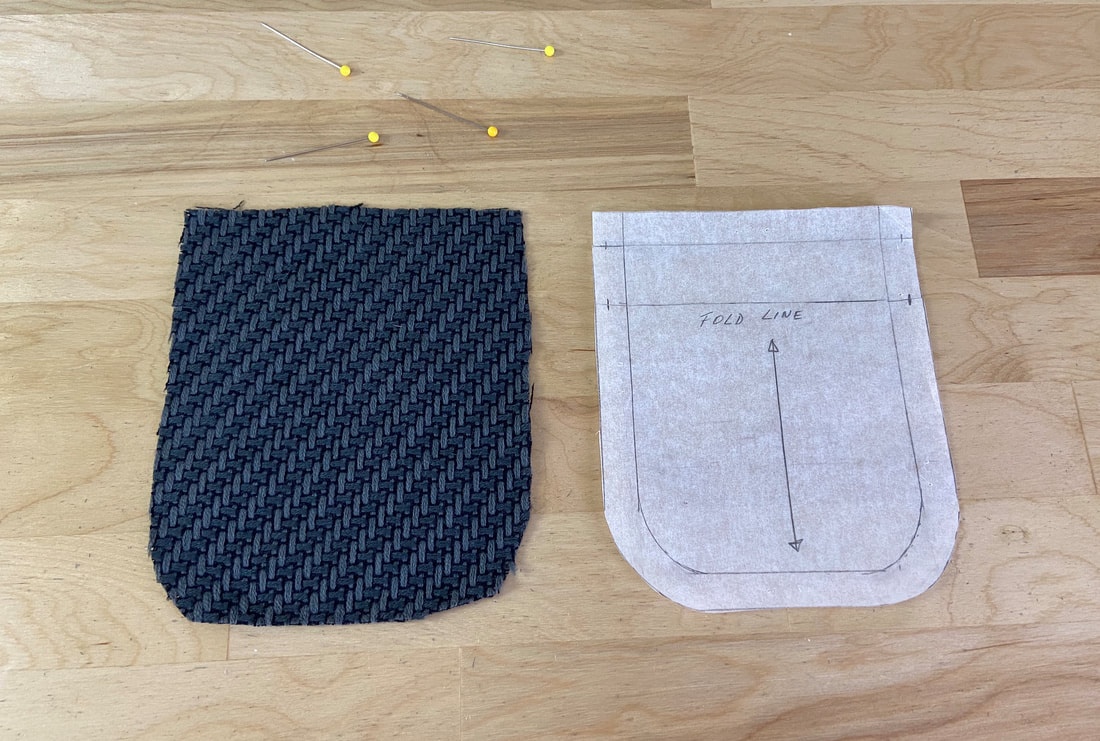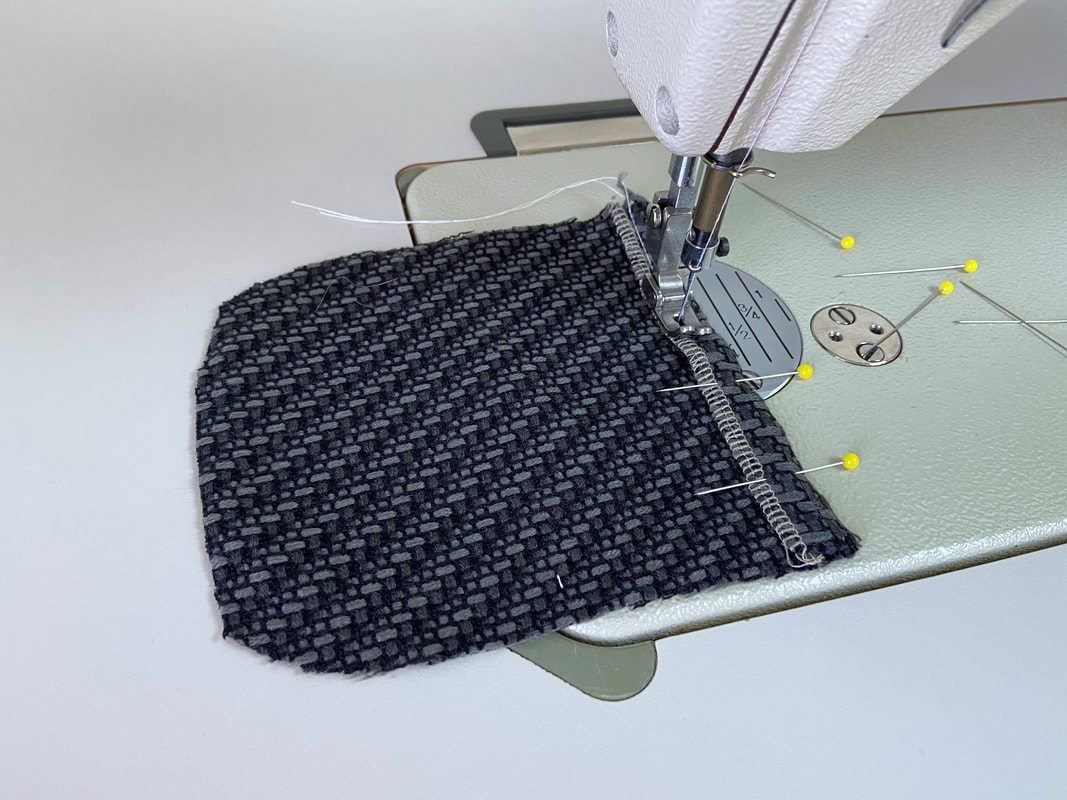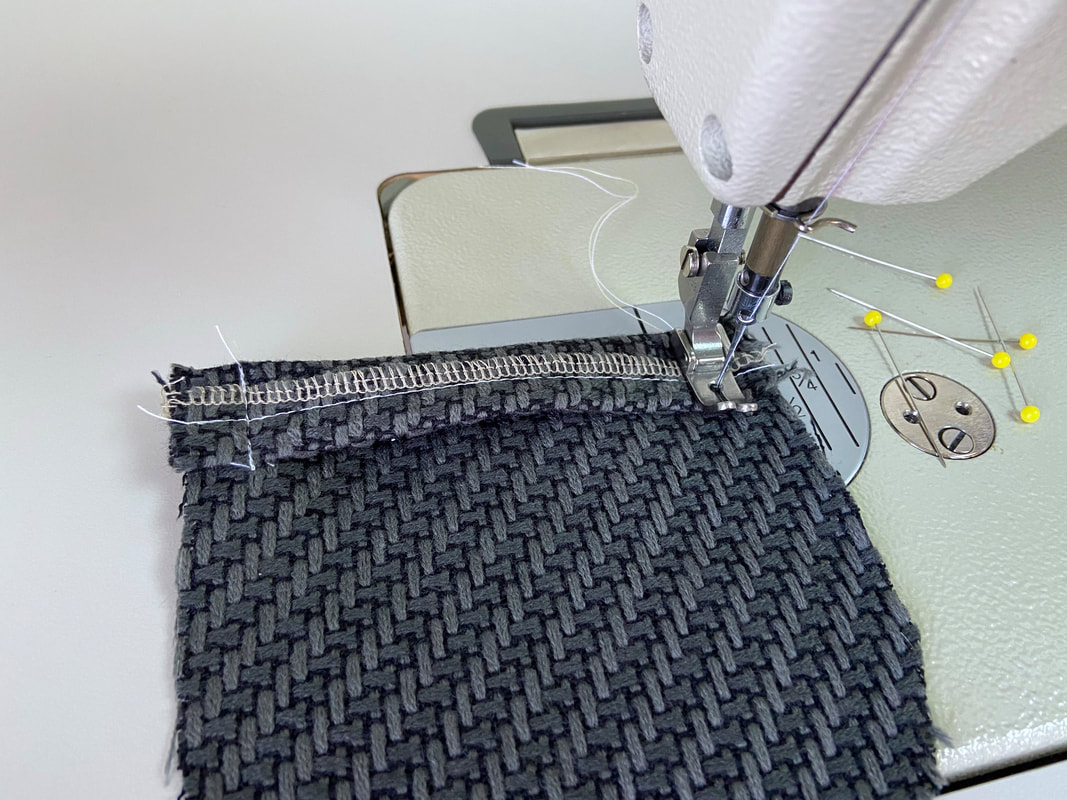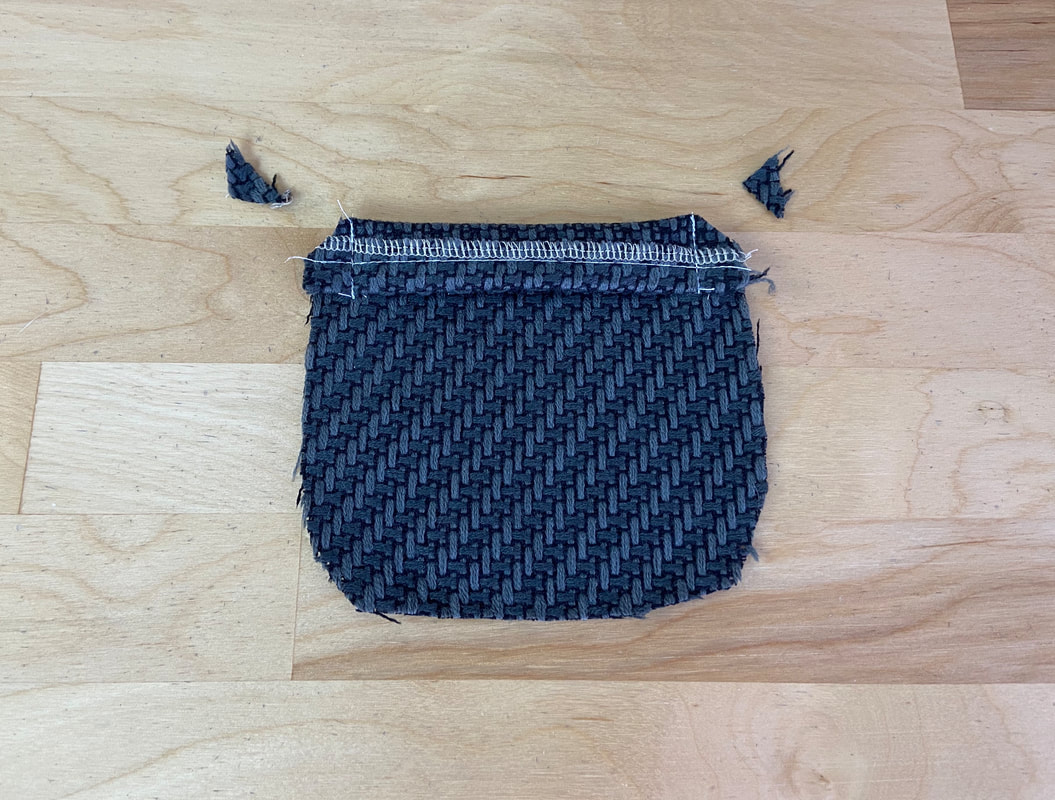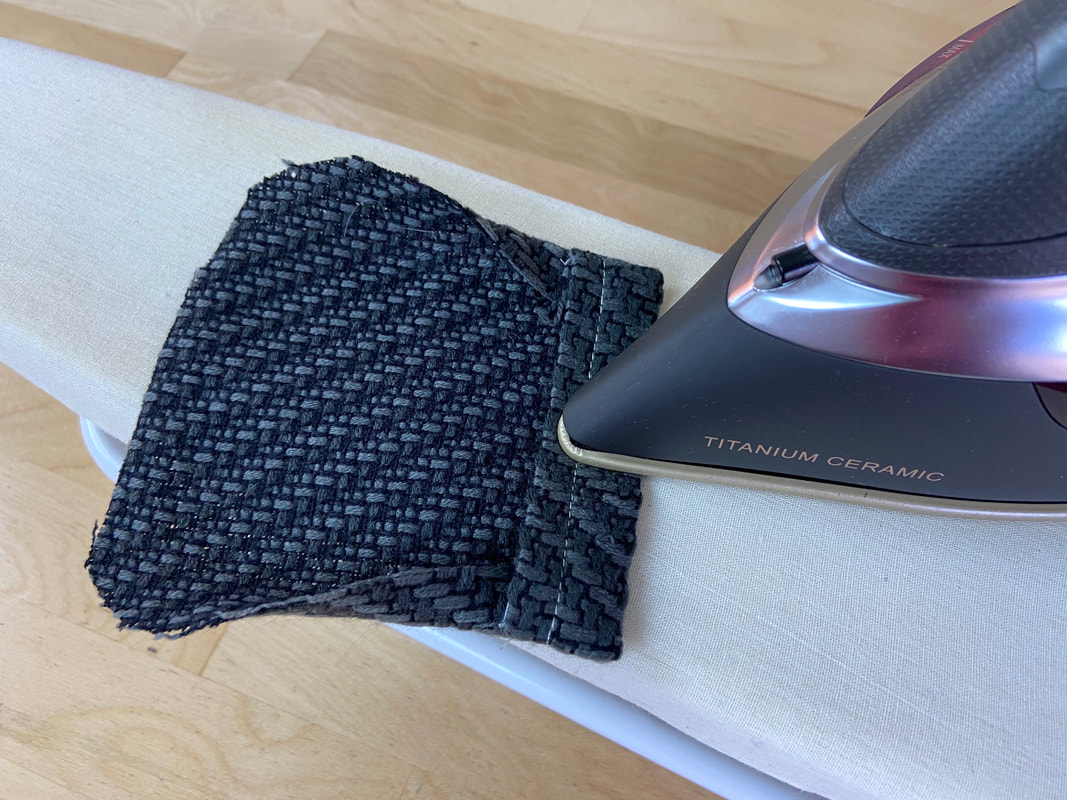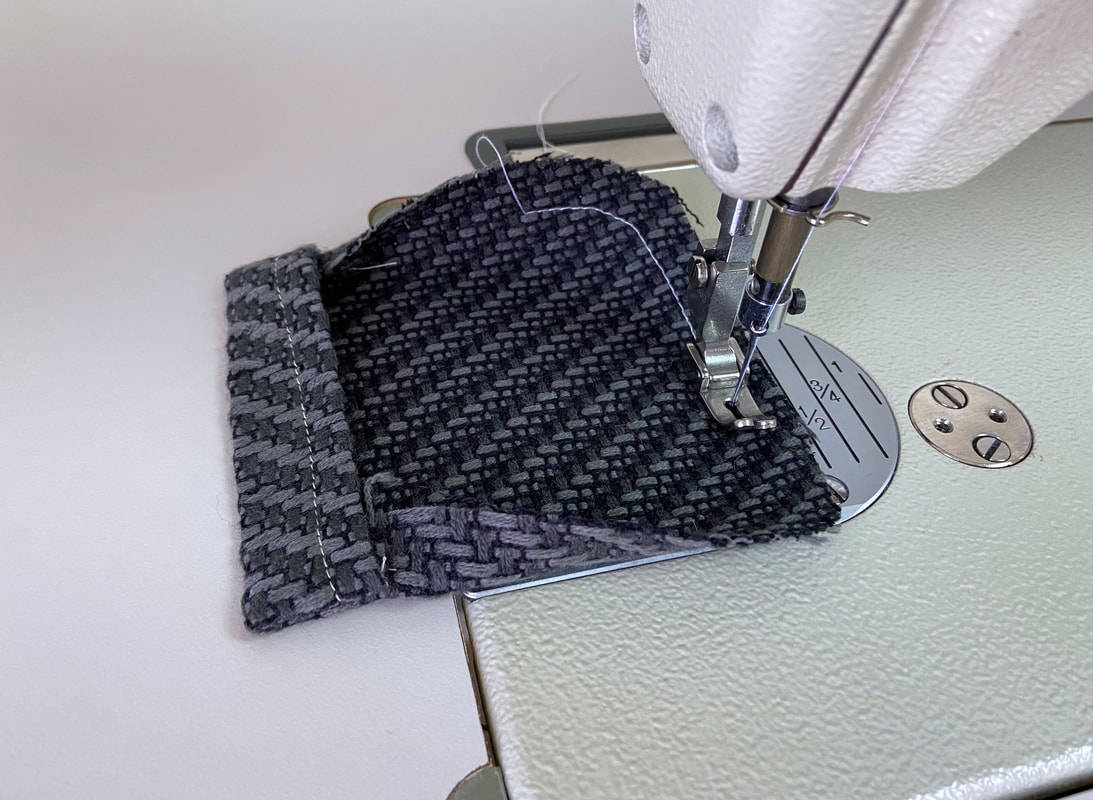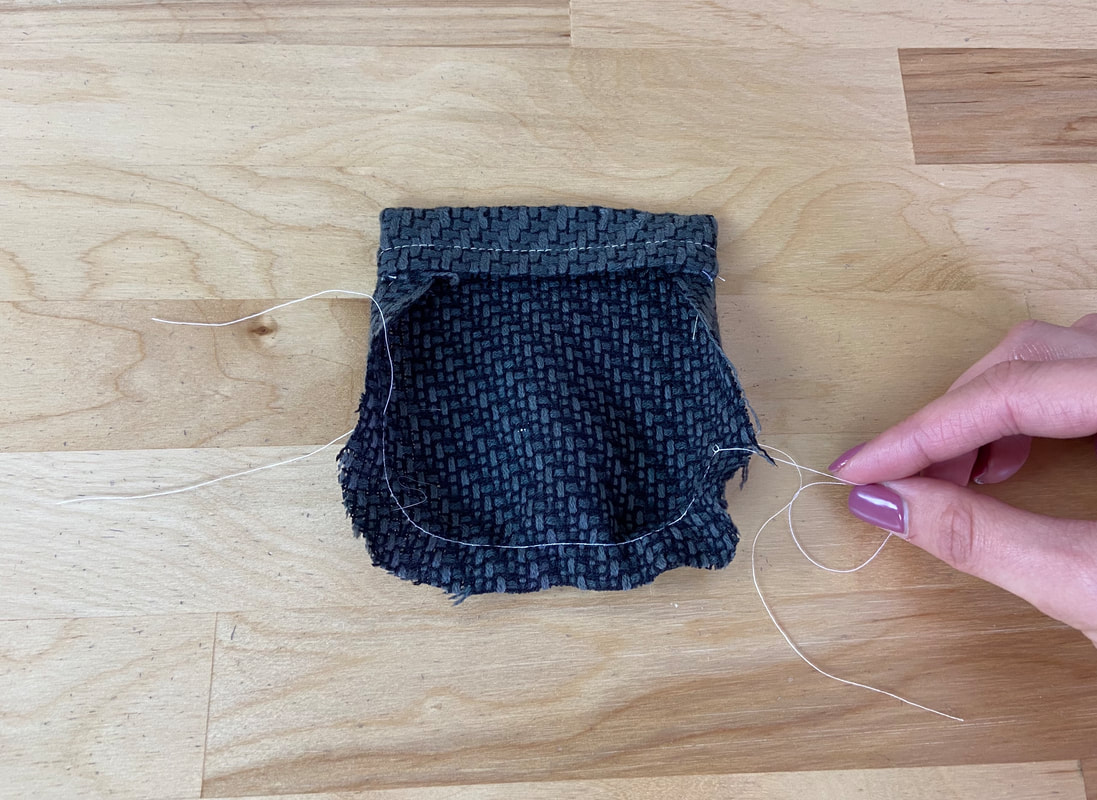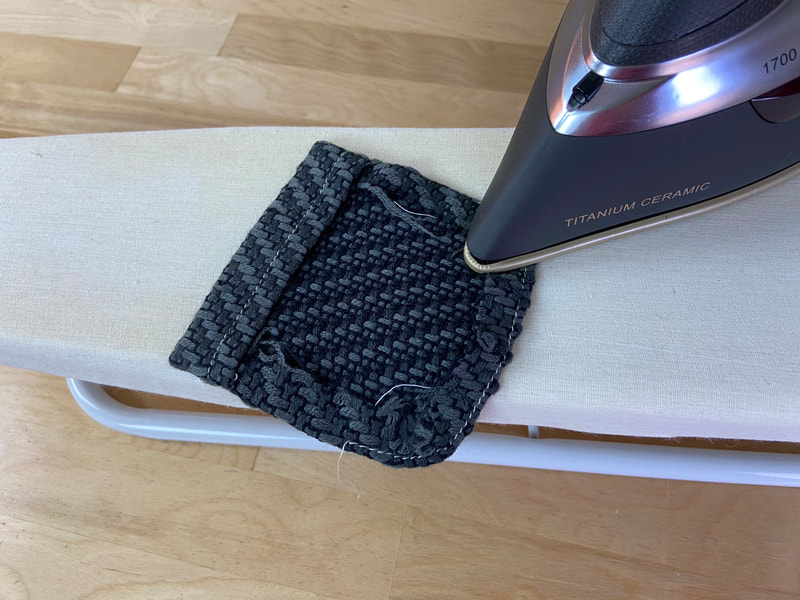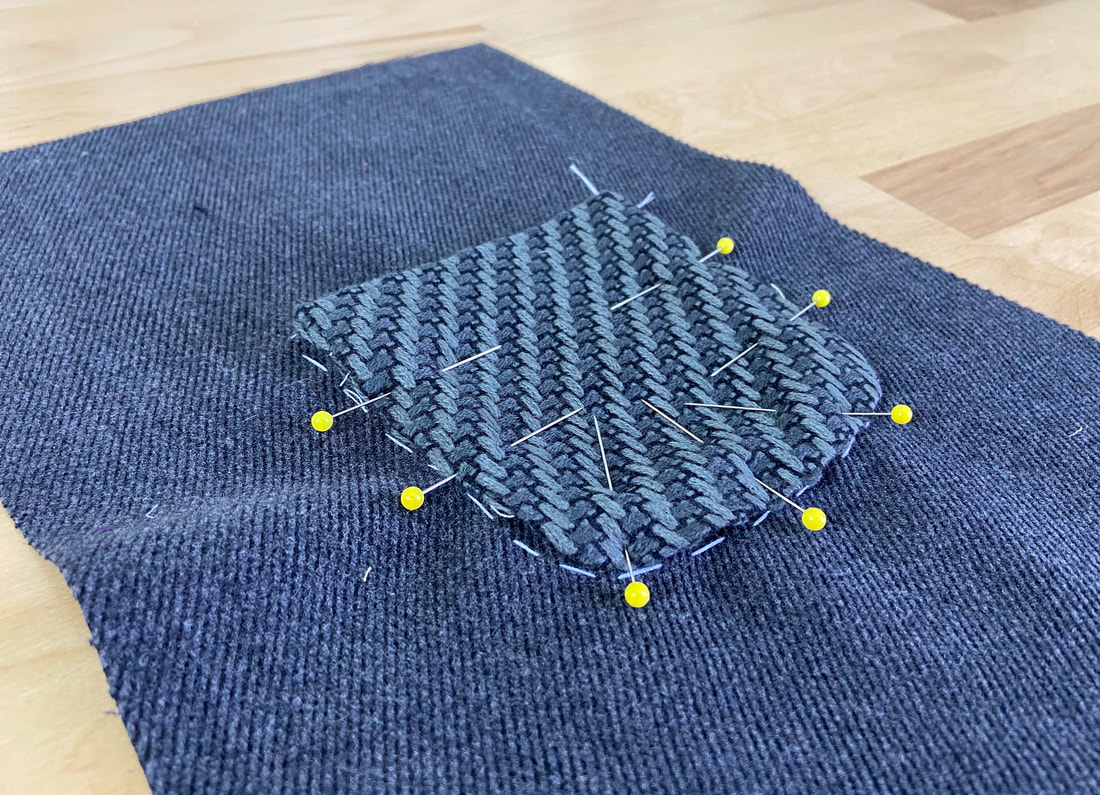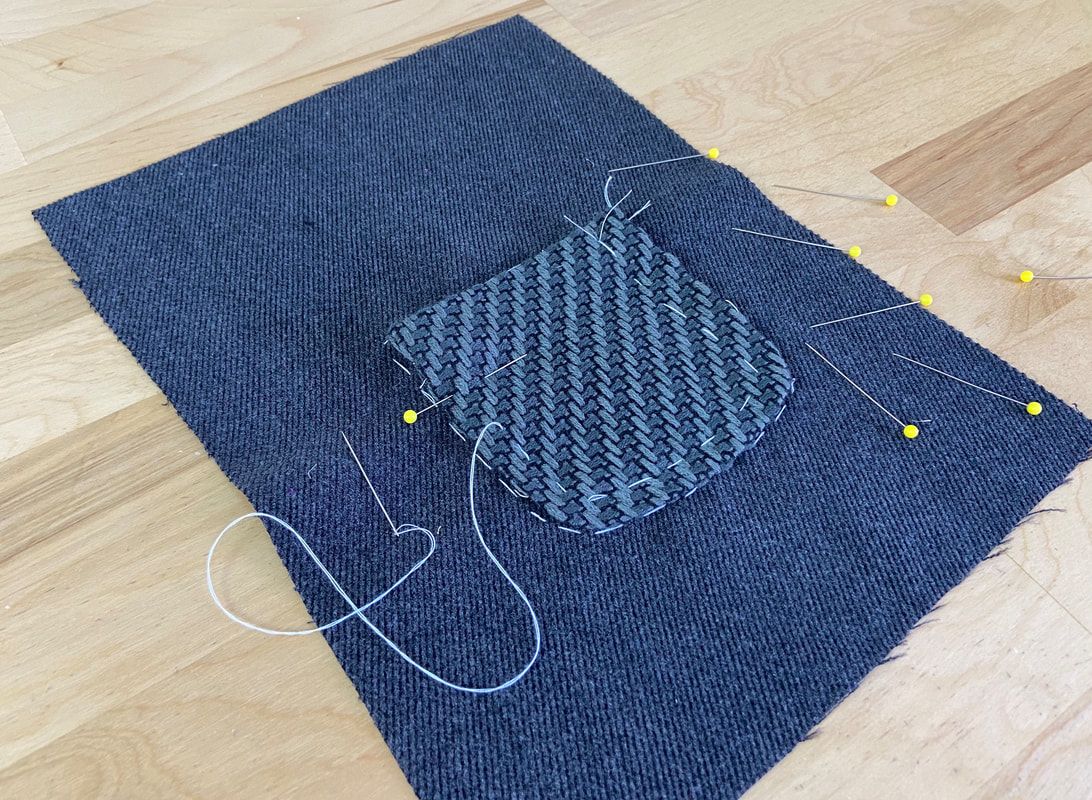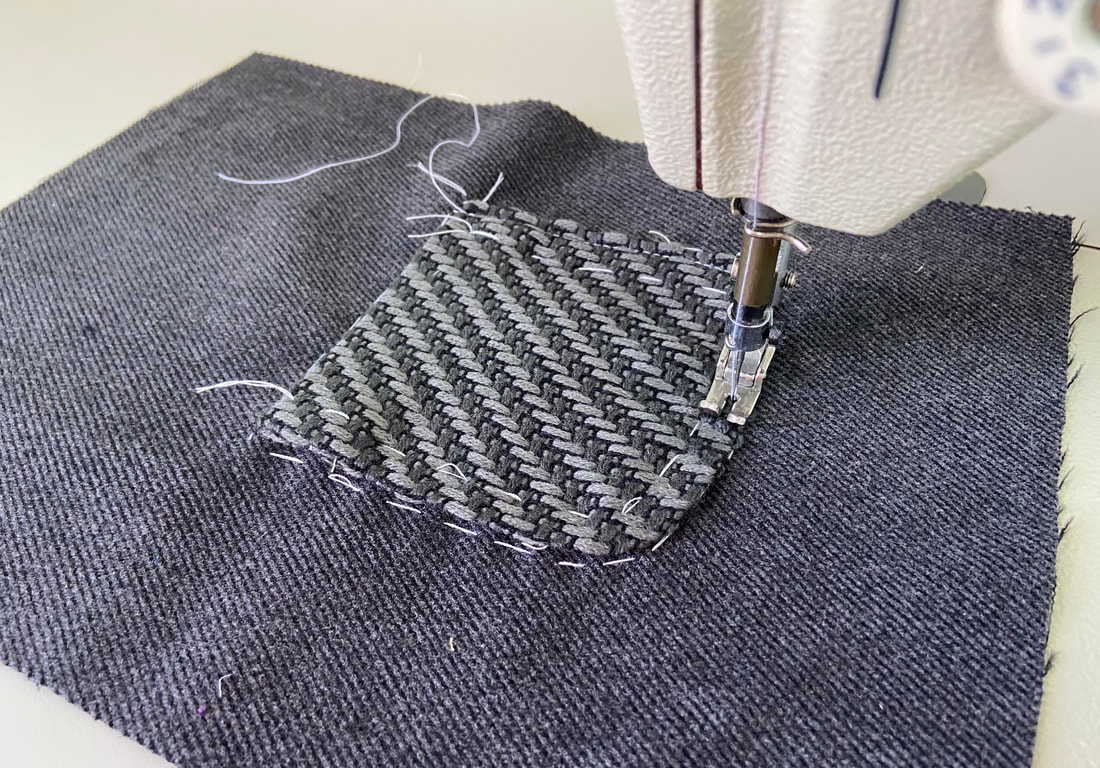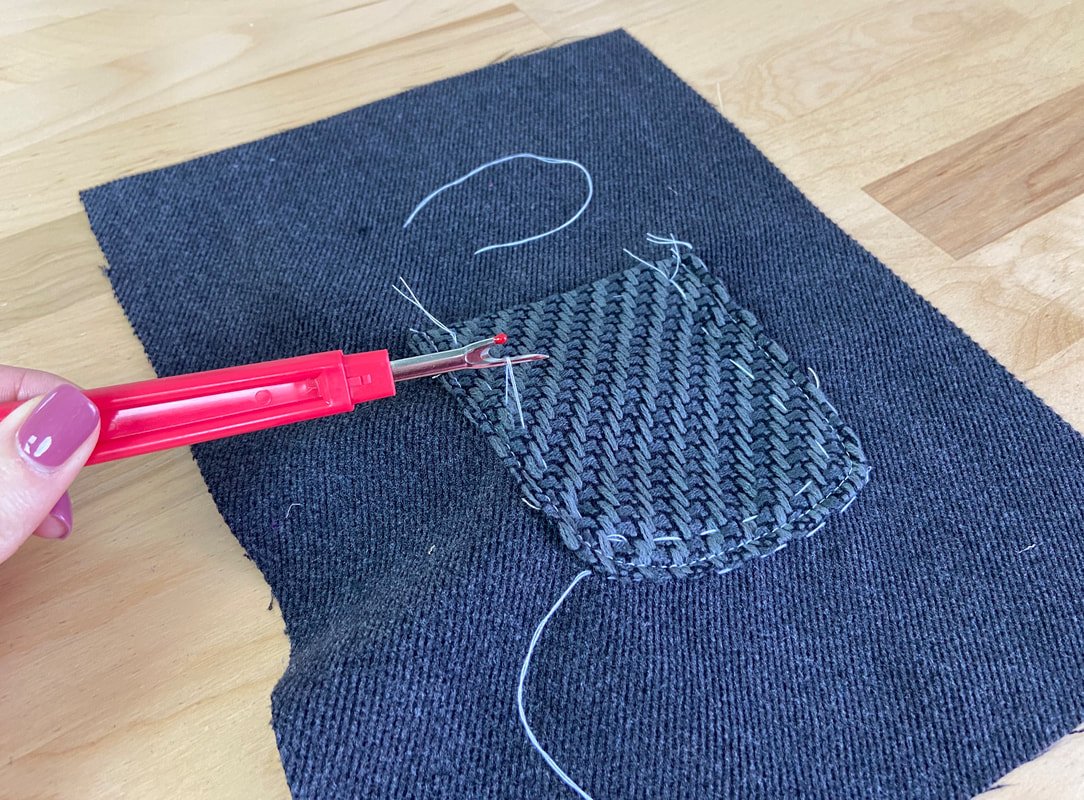Mini Tutorial: How To Sew A Curved Patch Pocket
If the patch pocket pattern is provided in your pattern set, cut the pocket piece as indicated. If you don't have patterns, you can draft your own or draw the pocket piece outline directly on the fabric and cut it out.
In this tutorial, the pocket's top opening edge (horizontal) will be finished with a self-facing which is built in as a 1.5" extension at the top. The "fold line" indicated on the pattern corresponds to the pocket's finished top edge.
In this tutorial, the pocket's top opening edge (horizontal) will be finished with a self-facing which is built in as a 1.5" extension at the top. The "fold line" indicated on the pattern corresponds to the pocket's finished top edge.
1. Let start with clean-finishing the top edge first: Apply a serging or zigzag stitch to the pocket's top raw edge.
Turn the edge toward the pocket's wrong side at 1/2", iron, pin and topstitch the folded edge from the wrong side of the application as shown.
Tip: Use the serging/zigzag stitch as a guide in the stitching process.
Turn the edge toward the pocket's wrong side at 1/2", iron, pin and topstitch the folded edge from the wrong side of the application as shown.
Tip: Use the serging/zigzag stitch as a guide in the stitching process.
2. Fold the extension over the top edge toward the pocket's face side, and insert pins on both ends to secure.
Stitch the two ends at the designated seam allowance. In this case, the seam allowance is 1/2". Naturally, this seam allowance is the same as the pocket's bottom/sides.
Stitch the two ends at the designated seam allowance. In this case, the seam allowance is 1/2". Naturally, this seam allowance is the same as the pocket's bottom/sides.
3. To minimize bulk, trim the top corner seam allowance diagonally as pictured above.
4. Turn the folded edge on its face side, exposing the clean-finished corners, and iron the folded edge evenly to smooth and flatten it.
5. Switch your machine to a longer stitch or basting (longest stitch available on your machine) and apply a stitch along the pocket's curved bottom edge. This is called easestitching and will help you fold the curved edge much easier in the process to follow.
6. Pull one of the stitch threads to create some tension, and direct the curved seam allowance toward the wrong side of the pocket. You'll find that the easestitching is able to naturally guide this otherwise difficult-to-manage curved edge providing much needed stability.
7. Iron the folded edge toward the wrong side of the pocket layer. The easestitching should be visible on the fold's wrong side and hidden on the pocket's face side.
8. Trace an outline of the patch pocket on the garment surface using either tailor's chalk or hand basting (shown above) and align the patch pocket within these marked lines.
Pin the pocket to the garment layer underneath, inserting the pins perpendicular to the edges. This pin placement will provide a lot more stability and comfort in the topstitching process.
Pin the pocket to the garment layer underneath, inserting the pins perpendicular to the edges. This pin placement will provide a lot more stability and comfort in the topstitching process.
For extra stability, especially if working with flimsy slippery fabrics, replace the pins with a hand basting stitch.
9. Starting at one end/corner of the pocket opening, topstitch next to the pocket's folded edge moving down then back up until arriving at the other pocket opening corner/end. It is important in this case, to backstitch at both beginning and end of the stitch.
10. Next, remove the hand basting (if any) with a seam ripper.
Last but not least, iron the finished patch pocket to smooth and flatten the topstitching.
It is good practice to reinforce each opening corner either using a whipstitch or a bar tack. These two corners sustain a lot of pressure and pulling during the pocket's lifespan thus reinforcing them with extra stitching will provide much needed strength and durability.
Last but not least, iron the finished patch pocket to smooth and flatten the topstitching.
It is good practice to reinforce each opening corner either using a whipstitch or a bar tack. These two corners sustain a lot of pressure and pulling during the pocket's lifespan thus reinforcing them with extra stitching will provide much needed strength and durability.

